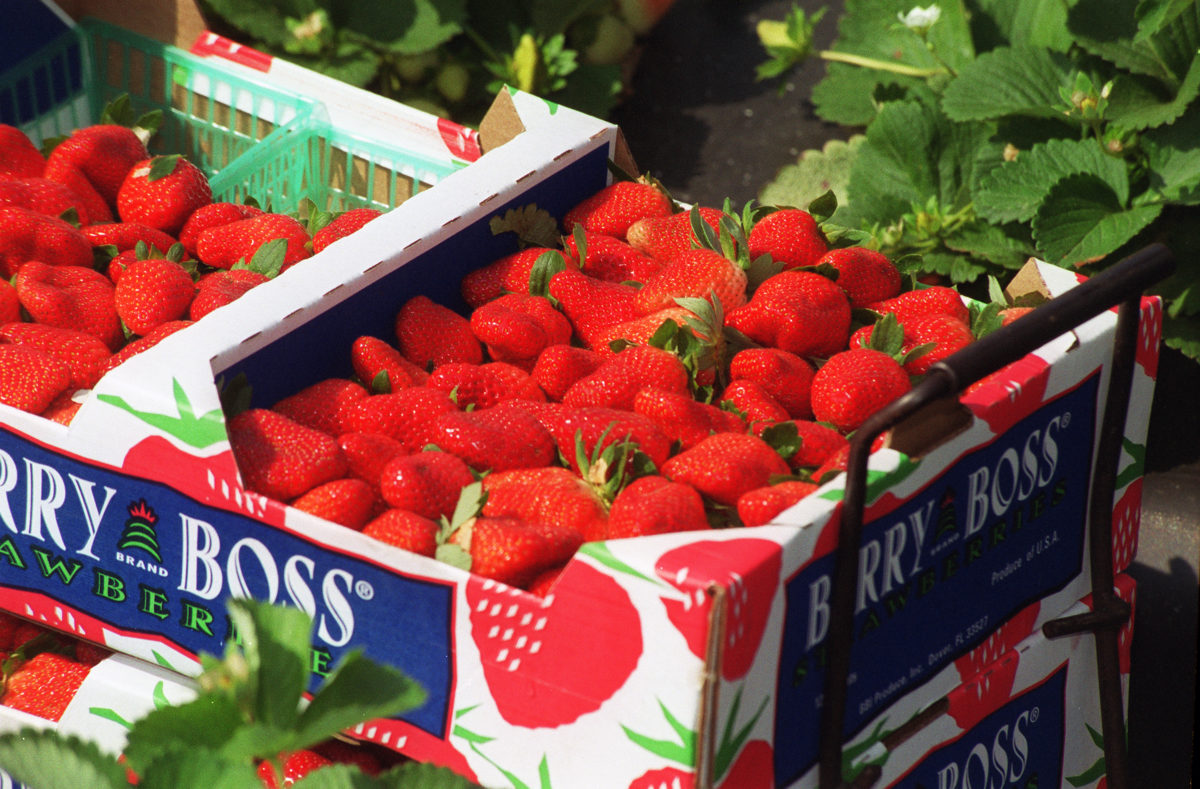By Maria M. Lameiras for UGA CAES News Home gardeners and commercial farmers alike can attest to the disappointment of seeing a beautiful tomato ripening on a vine, only to discover that the fruit has dark, sunken pits at the blossom end of the fruit. Called blossom-end rot (BER), this physiological disorder is prevalent in fruit and vegetable crops, including …
UF/IFAS-Developed Blueberry App to Help Growers Battle Diseases, Pests
By: Brad Buck, bradbuck@ufl.edu, 352-875-2641 (cell) A new University of Florida app will help the state’s blueberry growers identify and manage disease and insect injuries commonly encountered in Florida before their crop is ruined. Collectively, blueberries are a $60 million-per-year crop in Florida. Patricio Munoz, the UF/IFAS blueberry breeder and an assistant professor of horticultural sciences, came up with the …
Neopestalotiopsis Fruit Rot Warning for Strawberry Producers
Georgia strawberry producers need to monitor their plants for Neopestalotiopsis Fruit Rot. It has already caused problems for Florida farmers and nurseries in North Carolina where many Georgia farmers get their plugs from. “(Georgia producers) should be aware of it. We had a meeting on it again,” said University of Georgia plant pathologist Phil Brannen. “It has been found in …
Plethora of Plant Diseases Following Rainy Season for Alabama Producers
A wet 2020 has had Alabama vegetable and specialty crop producers fending off plant diseases. Even before the state encountered a couple of hurricanes, including Sally in mid-September and Zeta in late October, it had already received its share of rainfall. Not surprisingly, the excess moisture led to numerous plant diseases, according to Ed Sikora, professor and Extension plant pathologist …
Mild, Wet Weather Leads to Rise in Downy Mildew Disease in Alabama This Year
Weather conditions in Alabama this year were conducive to plant diseases impacting the state’s vegetable crops. One disease, downy mildew, has been especially prevalent in fields across the state, according Ed Sikora, Alabama Extension Specialist and Professor in Entomology and Plant Pathology at Auburn University. “I put out about eight cucurbit downy mildew sentinel plots around the state. Most of …
Scab Disease Important Factor to Consider Before Planting Pecans
Doug Chapman, Alabama Extension agent for Commercial Horticulture in North Alabama, says the ramifications of having scab disease in your pecan orchards can’t be understated. “It’s the difference between having pecans and not having them,” Chapman said. Even as pecan harvest is under way across Alabama, soon it will be time to plant new pecan trees. Pecan planting is usually …
New Disease Threatens Florida Strawberries
By Natalia A. Peres Pestalotiopsis is not necessarily new to strawberry. A strawberry fruit rot caused by Pestalotia longisetula (or Pestalotiopsis) was reported for the first timein Florida in 1972. However, the fungus has always been considered a secondary pathogen. But this was not the case during the past two strawberry seasons (2018–19 and 2019–20), when severe outbreaks were reported …
Hop Stunt Viroid Infecting Citrus Trees in Georgia
According to UGA Extension IPM blog, hop stunt viroid has been discovered in Georgia. Citrus production in Georgia is rapidly increasing each year. There are citrus plantings in backyards, production, and plant nurseries within at least 32 GA counties. The growth of citrus in Georgia is only expected to increase over time. However, there are some threats to expansion. Citrus …
Use Resistant Varieties When Possible to Protect Against Whiteflies
University of Georgia Cooperative Extension vegetable entomologist Stormy Sparks paints an ominous picture of the potential devastation whiteflies will have on this year’s fall vegetable crop. “We’re probably a month ahead of the last two years. This is going to be challenging fall for whiteflies,” Sparks said. Vegetable producers across the Southeast have either planted or are currently planting their …
Producers Be Aware of Phony Peach Disease
Peach producers need to be mindful of Phony peach disease. According to the UGA Peach Blog, Phil Brannen, University of Georgia Cooperative Extension plant pathologist, cautions growers that if a tree is diagnosed with the disease, they need to destroy the tree immediately. They also need to remove it from the orchard to prevent further spread of the Xylella fastidiosa …










